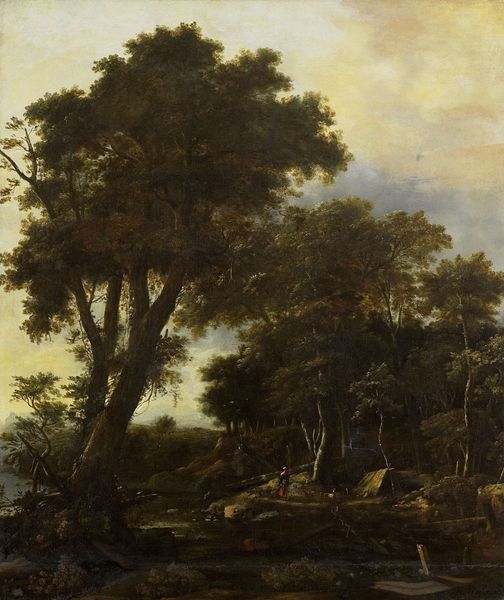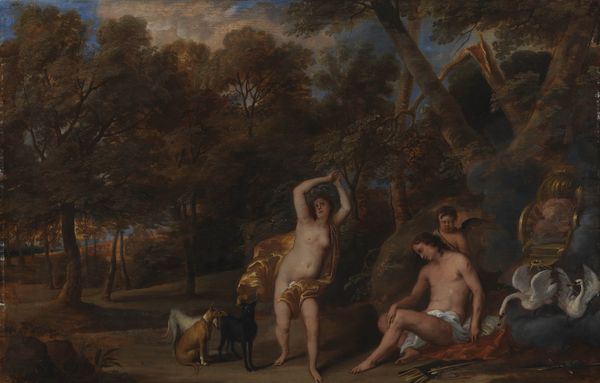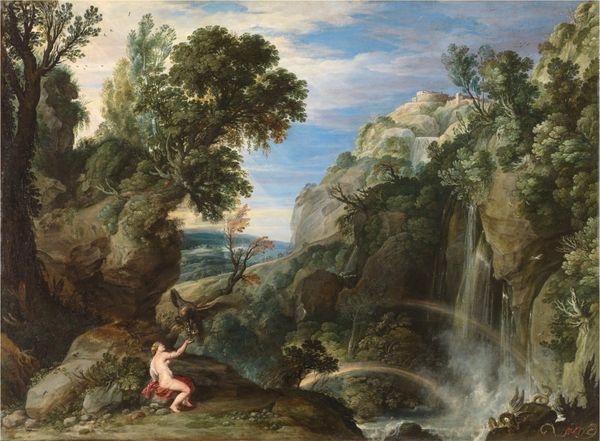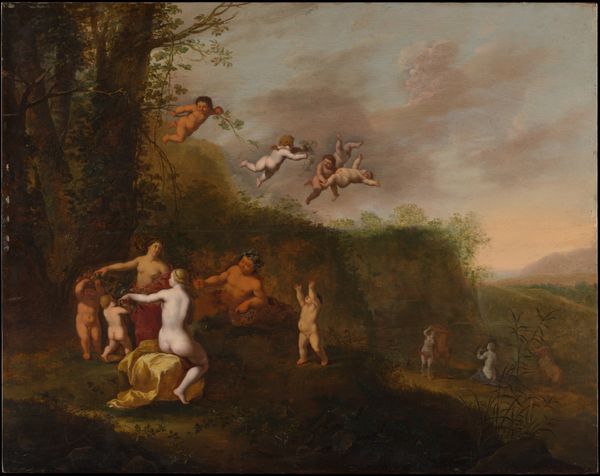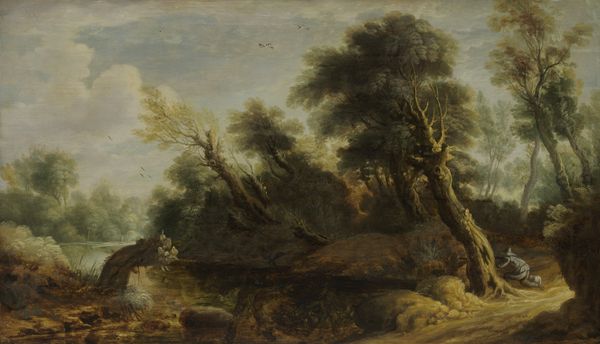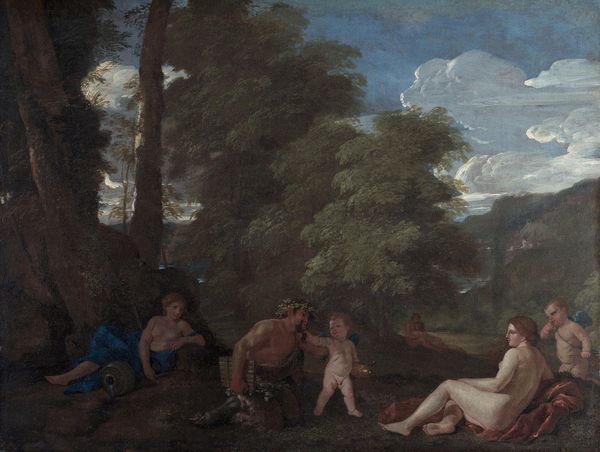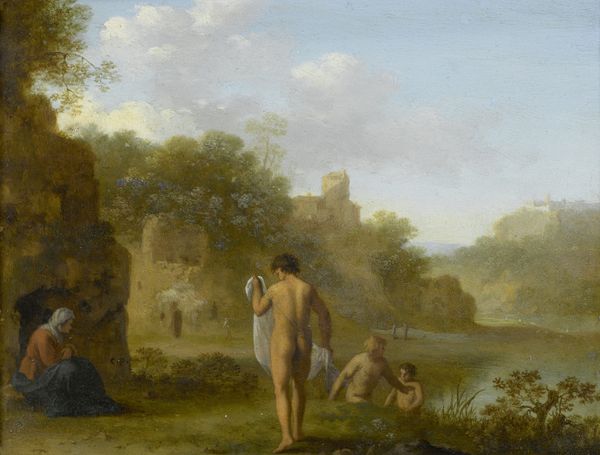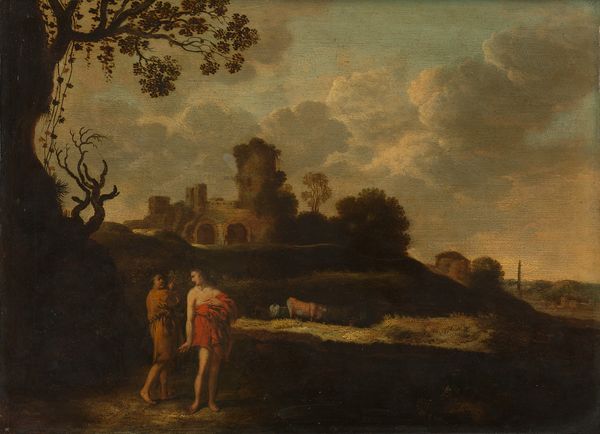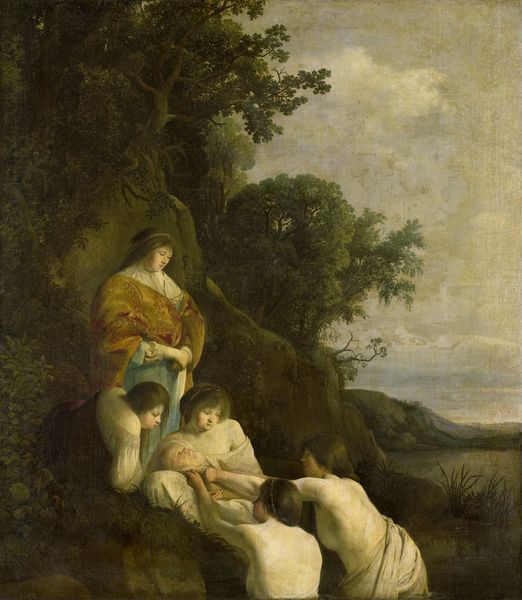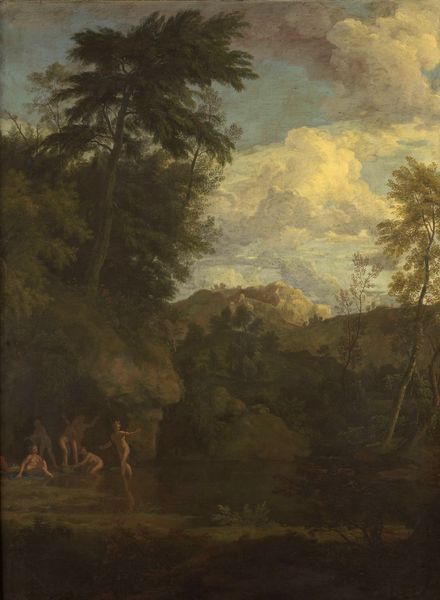
painting, oil-paint
#
allegory
#
baroque
#
painting
#
oil-paint
#
landscape
#
genre-painting
#
nude
Dimensions: support height 58.2 cm, support width 50.6 cm
Copyright: Rijks Museum: Open Domain
Curator: Here we have Moyses van Wtenbrouck’s “A Bathing Nymph Taken by Surprise by a Satyr,” painted circa 1630 to 1635. It's quite the scene, isn't it? Editor: My first impression is the weight of that foliage. Almost oppressive. The density feels quite heavy compared to the smallness of the figures. It looks like oil on canvas? You can almost feel the layering of paint. Curator: Yes, the Baroque period favored those kinds of dramatic compositions. This piece plays on the familiar theme of the vulnerability of female beauty encountering raw, masculine impulse. It fits within the genre-painting tradition, presenting a slice of life – albeit a mythological one – as a form of entertainment. Editor: I'm interested in the texture the artist achieves, especially with that nymph's skin. And look at the implied labor; someone had to grind those pigments, stretch that canvas, prime it. Think of the workshop, the apprentices… This wasn't a solitary act. Curator: Precisely. Patronage played a crucial role, didn't it? The artist relies on commissions, on aligning with prevailing tastes within courtly society. Such scenes would likely have adorned the walls of wealthy collectors. These depictions are rooted in existing stories, mythologies repackaged for a specific audience, reaffirming societal norms regarding gender and power. Editor: So you're saying the nude nymph and the satyr weren't just innocent fun for the viewer, but served a social purpose beyond aesthetics? These weren’t simply titillating fantasies made for pleasure. Curator: Certainly. While it’s easy to see just the surface, it’s useful to remember that these objects exist within complex frameworks of power and influence. The museum as we know it even participates in that perpetuation! Editor: That consideration really reshapes the piece, thinking about it in terms of access to materials, studio hierarchies and power relationships in artistic patronage during that time, even the physical process… fascinating. Curator: Absolutely, seeing through multiple lenses, especially across time, allows us to recognize both the artistry and its cultural entanglements. Editor: Indeed, focusing on these production means helps ground our understanding of both labor and aesthetics, which enriches how we understand what images like these even *mean*.
Comments
rijksmuseum over 2 years ago
⋮
At the edge of a forest with striking, eccentrically shaped trees, a bathing nymph is surprised by a satyr (a woodland creature from Greek mythology), who suddenly leaps out at her. In the background is a second satyr playing a flute. Van Wtenbrouck painted mainly landscapes with mythological or biblical subjects, a genre that at the time was in great demand by literate patrons.
Join the conversation
Join millions of artists and users on Artera today and experience the ultimate creative platform.
